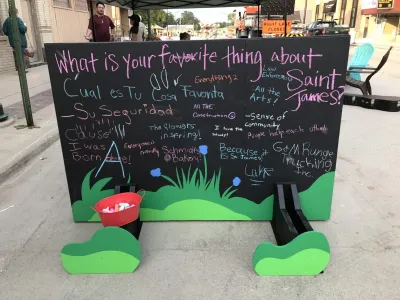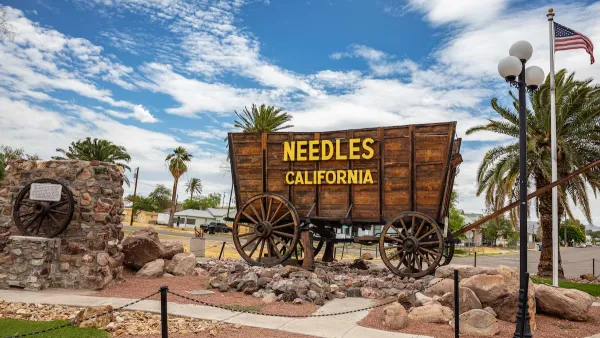An in-depth look at the lessons one housing organization learned after receiving a multimillion grant to integrate arts and culture strategies in its work. Has the organization changed the way it operates?

It wasn’t a typical staff meeting. Everyone was sitting in a circle, and the facilitator had handed out pipe cleaners and playing cards and instructed the participants to use the objects to create an image about their day. A few were apprehensive at first—playing with pipe cleaners seemed more suited to a first-grade classroom than one’s workplace—but, following the lead of the facilitator, artist Ashley Hanson of PlaceBase Productions, they were learning to trust the process, worrying less about the result and concentrating more on the task of getting there. So they went for it, twisting, bending, folding, each coming up with their own unique creation. One by one, the participants presented what they had made. And with each sharing, a collective story about the people in the room began to emerge.
The group was the staff of the Southwest Minnesota Housing Partnership (SWMHP). Founded in 1992 with a mission to support the economic development of communities throughout southwest and south-central Minnesota, SWMHP had a longstanding track record of creating affordable housing and homeownership opportunities. In the world of community development, the organization’s many accomplishments had followed what some might call a conventional path: listening sessions and surveys, city council meetings, funding applications, and endless puzzling over how—with limited resources—to build functional, well-designed homes.
But now SWMHP was defying convention. In 2015, the organization became one of six community development organizations in the country to be awarded a $3 million grant from ArtPlace America through its Community Development Investment (CDI) program. The three-year initiative challenged grant recipients to explore sustainable ways of integrating arts and culture into their core operations. That art could serve a practical purpose, as much as any spreadsheet or survey, was a new and exciting concept to the leadership team at SWMHP—exciting enough that they applied for the CDI grant and won it. Now, sitting in a circle with their pipe cleaners and playing cards, they wondered what exactly they had gotten themselves into.
...
FULL STORY: How Artists Helped a Housing Organization Adapt to Demographic Change

Analysis: Cybertruck Fatality Rate Far Exceeds That of Ford Pinto
The Tesla Cybertruck was recalled seven times last year.

National Parks Layoffs Will Cause Communities to Lose Billions
Thousands of essential park workers were laid off this week, just before the busy spring break season.

Retro-silient?: America’s First “Eco-burb,” The Woodlands Turns 50
A master-planned community north of Houston offers lessons on green infrastructure and resilient design, but falls short of its founder’s lofty affordability and walkability goals.

Test News Post 1
This is a summary

Analysis: Cybertruck Fatality Rate Far Exceeds That of Ford Pinto
The Tesla Cybertruck was recalled seven times last year.

Test News Headline 46
Test for the image on the front page.
Urban Design for Planners 1: Software Tools
This six-course series explores essential urban design concepts using open source software and equips planners with the tools they need to participate fully in the urban design process.
Planning for Universal Design
Learn the tools for implementing Universal Design in planning regulations.
EMC Planning Group, Inc.
Planetizen
Planetizen
Mpact (formerly Rail~Volution)
Great Falls Development Authority, Inc.
HUDs Office of Policy Development and Research
NYU Wagner Graduate School of Public Service




























